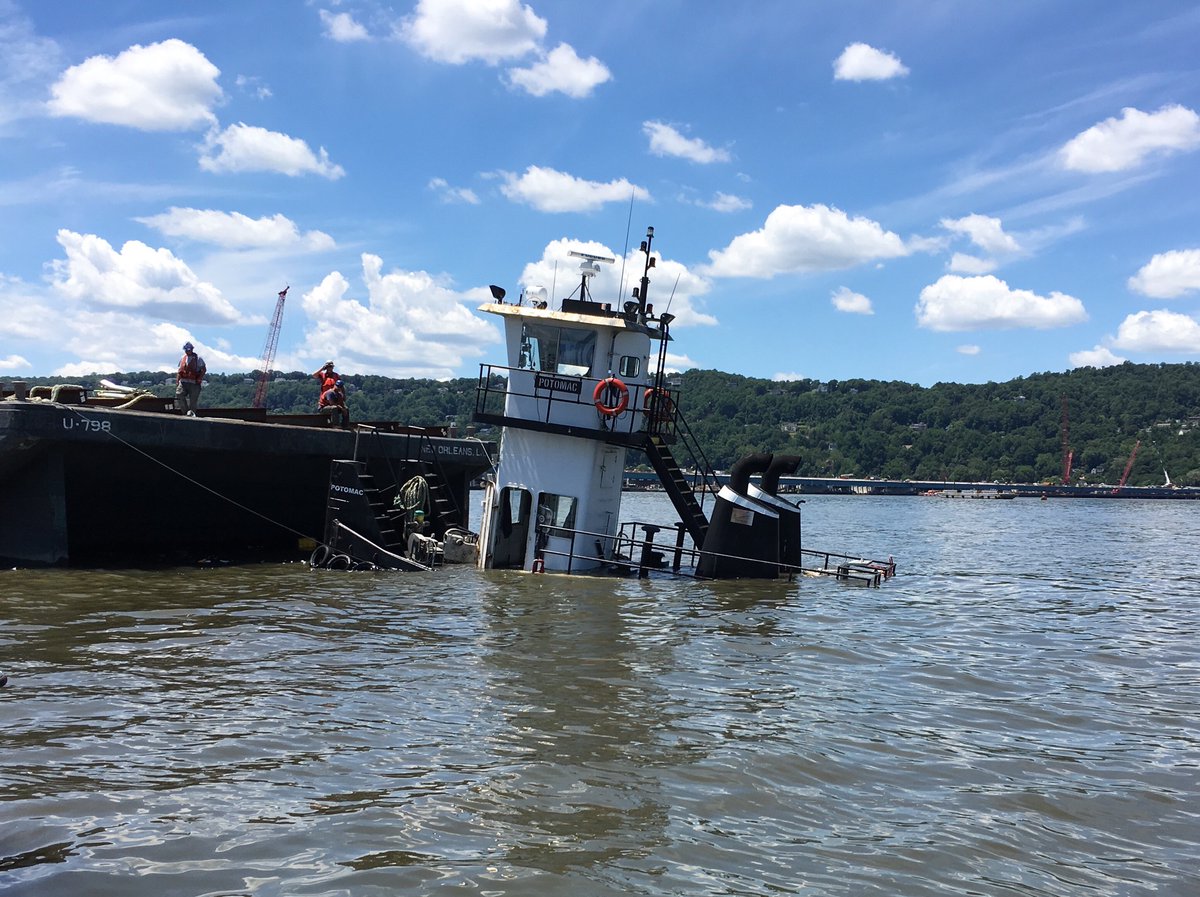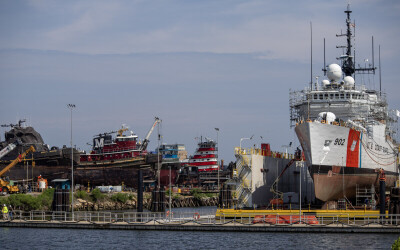Six towing industry workers died in accidents on the job in 2015, three by falling off vessels – still the leading cause of industry deaths, despite an overall steady downward trend in accidents over two decades.
The annual National Quality Steering Committee safety report, a joint endeavor of the Coast Guard and American Waterways Operators, shows the general trend of decline in crew fatalities continued, although the six deaths in 2015 were an uptick from 2014.
After the last peak of 29 fatalities in 1997, deaths were as high as 18 or 19 annually before falling into the single digits. However, fully half of all deaths being the consequence of falling overboard remains a constant fact, the committee reported.
“Since the beginning of the safety partnership, the committee has focused on falls overboard since they account for approximately 50% of towing vessel fatalities,” the Coast Guard noted in its Maritime Commons blog.
High water conditions in 2015 may have been a factor in other deaths, including two crew lost in towboat capsizes.
Overall, 2015 saw a worker fatality rate of seven per 100,000 workers, up from four per 100,000 in 2014. That compared with a 2014 worker fatality rate in the entire U.S. transportation sector of 15.4 per 100,000 according to the federal Bureau of Labor Statistics.
There were 109 reported worker injuries in 2015, including four classed as serious and two as severe. But those latter categories were down significantly by 34% compared to 2014, the committee reported.
The oil spill rate for 2015 was calculated at 1.92 gals. spilled per one million gals. transported, down from 2.62 gals. per one million gals. in 2015. The largest spill, 120,000 gals. of slurry oil, occurred during a Sept. 4 collision of two tows on the Lower Mississippi River near Columbus, Ky., accounting for 82% of total volume spilled in 2015. The second largest spill of 22,000 gals. of naptha occurred with the June 8 allision of two barges with a moored barge in Houston Ship Channel, totaling 15% of the total volume spilled.
Vessel accidents in 2015 were classified as low severity incidents 84% of the time, with medium and high severity incidents represented in 6% and 10% of all incidents, respectively. Casualty reports overall were down in a big trend of 34% from 2014, but the committee noted this is likely an effect of the new Coast Guard casualty reporting requirements.
The release of Marine Casualty Reporting Navigation and Inspection Circular (NVIC) 15-01 clarified casualty reporting requirements for both industry and Coast Guard investigating officers.
“In particular, the NVIC clarified the reporting requirements for lower severity incidents,” the committee said in its report. “A decrease in number of incidents was also observed in other industry segments (i.e. passenger vessels), and the Coast Guard will continue to analyze the data to determine causes for this phenomenon.”





